I want to animate my thumb layer on the drawn path. I can animate the progress layer as per the value but, moving the entire layer doesn't work.
func setProgress(_ value:Double, _ animated :Bool) {
let progressAnimation = CABasicAnimation(keyPath: "strokeEnd")
progressAnimation.duration = animated ? 0.6 : 0.0
progressAnimation.fromValue = currentValue
progressAnimation.toValue = value
progressAnimation.timingFunction = CAMediaTimingFunction(name: CAMediaTimingFunctionName.linear)
progressLayer.strokeEnd = CGFloat(value)
progressLayer.add(progressAnimation, forKey: "animateprogress")
}
Using this function I can animate the progress layer. and I'm stuck on animating thumb position.
I tried some things but, it's not working.
failed attempt 1
guard let path = thumbLayer.path else {return}
let center = CGPoint(x: frame.width/2, y: frame.height/2)
let radius = min(frame.width, frame.height)/2 - max(trackWidth, max(progressWidth, thumbWidth))/2
let thumbAngle = 2 * .pi * currentValue - (.pi/2)
let thumbX = CGFloat(cos(thumbAngle)) * radius
let thumbY = CGFloat(sin(thumbAngle)) * radius
let newThumbCenter = CGPoint(x: center.x + thumbX, y: center.y + thumbY)
let thumbPath = UIBezierPath(arcCenter: newThumbCenter, radius: thumbWidth/2, startAngle: -.pi/2, endAngle: .pi*1.5, clockwise: true)
let thumbAnimation = CABasicAnimation(keyPath: "path")
thumbAnimation.duration = animated ? 0.6 : 0.0
thumbAnimation.fromValue = path
thumbAnimation.toValue = thumbPath.cgPath
thumbAnimation.timingFunction = CAMediaTimingFunction(name: CAMediaTimingFunctionName.linear)
thumbLayer.strokeEnd = CGFloat(value)
thumbLayer.add(thumbAnimation, forKey: "animateprogress")
failed attempt 2
let intialPosition = thumbLayer.position
let center = CGPoint(x: frame.width/2, y: frame.height/2)
let radius = min(frame.width, frame.height)/2 - max(trackWidth, max(progressWidth, thumbWidth))/2
let thumbAngle = 2 * .pi * currentValue - (.pi/2)
let thumbX = CGFloat(cos(thumbAngle)) * radius
let thumbY = CGFloat(sin(thumbAngle)) * radius
let newThumbCenter = CGPoint(x: center.x + thumbX - thumbCenter.x, y: center.y + thumbY - thumbCenter.y)
thumbLayer.position.x = newThumbCenter.x
let thumbAnimationX = CABasicAnimation(keyPath: "progress.x")
thumbAnimationX.duration = animated ? 0.6 : 0.0
thumbAnimationX.fromValue = intialPosition.x
thumbAnimationX.toValue = newThumbCenter.x
thumbAnimationX.timingFunction = CAMediaTimingFunction(name: CAMediaTimingFunctionName.linear)
thumbLayer.add(thumbAnimationX, forKey: "progress.x")
thumbLayer.position.y = newThumbCenter.y
let thumbAnimationY = CABasicAnimation(keyPath: "progress.y")
thumbAnimationY.duration = animated ? 0.6 : 0.0
thumbAnimationY.fromValue = intialPosition.y
thumbAnimationY.toValue = newThumbCenter.y
thumbAnimationY.timingFunction = CAMediaTimingFunction(name: CAMediaTimingFunctionName.linear)
thumbLayer.add(thumbAnimationY, forKey: "progress.y")



